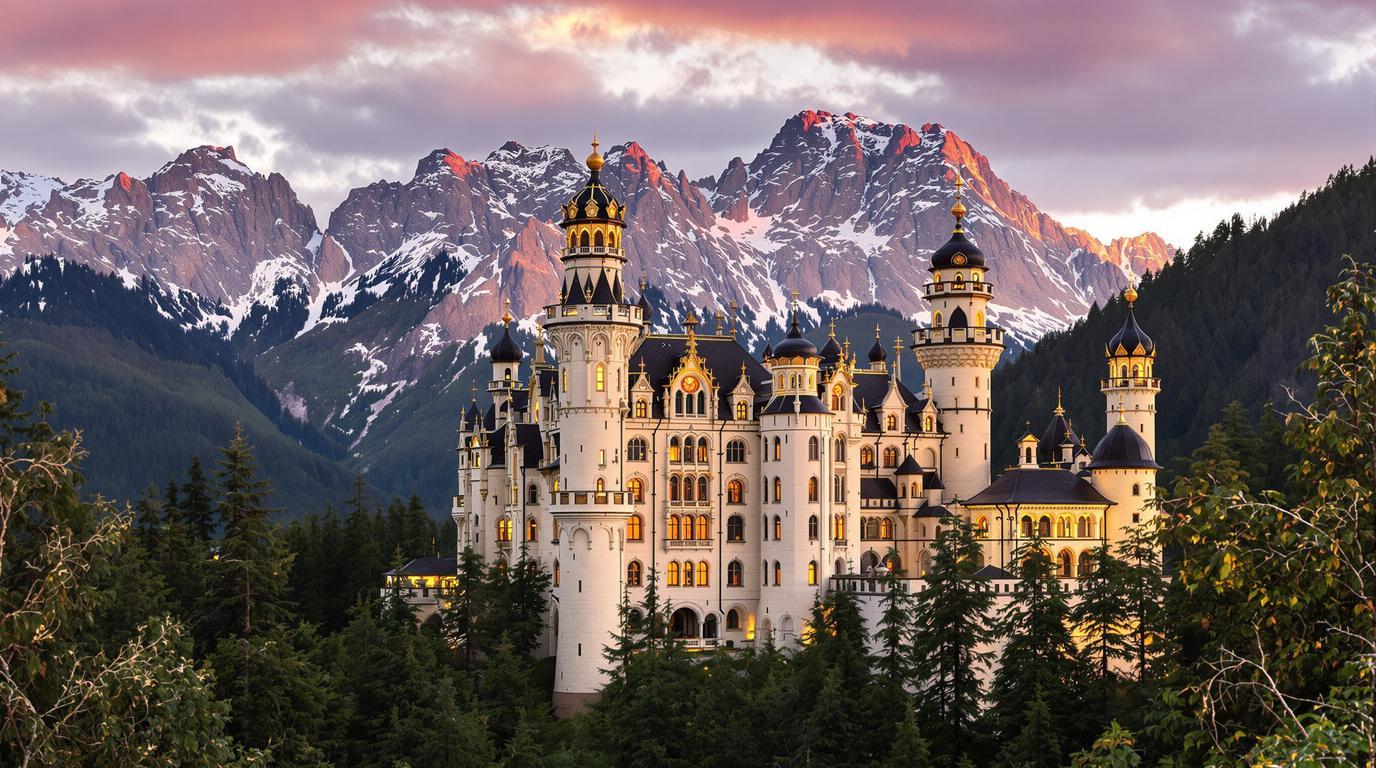In Romania’s Carpathian Mountains lies a jewel that once hosted royalty but remains refreshingly uncrowded compared to Europe’s marquee destinations. Sinaia, nicknamed “The Pearl of the Carpathians,” served as the summer retreat for Romanian kings, who built a castle so magnificent that foreign diplomats would travel days just to attend parties within its walls.
A fairytale castle that rivals Europe’s most famous royal residences
Peles Castle stands as Sinaia’s crown jewel—a Neo-Renaissance masterpiece that will make you question why it isn’t as famous as Germany’s Neuschwanstein. Completed in 1914, this royal residence features 160 rooms adorned with Murano glass chandeliers, Cordoba leather walls, and hand-carved walnut staircases. Its armory displays over 4,000 European and Oriental weapons, many encrusted with precious stones.
The castle was the first in Europe to have electricity produced by its own plant. King Carol I was so suspicious of this new technology that he refused to touch any switches himself,” explains local historian Maria Popescu.
Where monarchy meets monastery in perfect harmony
Just a short walk from royal opulence stands the 17th-century Sinaia Monastery, founded by a nobleman after his pilgrimage to Mount Sinai. Its weathered stone walls and Byzantine frescoes offer a spiritual counterpoint to Peles Castle’s grandeur. Inside the monastery’s museum, you’ll find Romania’s first printed Bible dating back to 1668.
The mountain playground where Romanian royals escaped summer heat
Sinaia isn’t just about human-made wonders—the surrounding Bucegi Mountains offer spectacular hiking in summer and premier skiing in winter. The cable car ascends to 7,000 feet, revealing panoramic views that once inspired Romanian poets and continue to enchant photographers. Unlike Switzerland’s famous peaks, these trails remain blissfully uncrowded even in high season.
A casino where no one gambles (anymore)
The Art Nouveau Sinaia Casino, built in 1913, once attracted Europe’s elite with its gaming tables and ballrooms. Today, it houses cultural events rather than roulette wheels, but its ornate architecture—reminiscent of Monte Carlo’s casino—remains just as impressive. The building’s striking silhouette against the mountain backdrop makes it one of Romania’s most photographed structures.
Hidden natural wonders that rival France’s emerald waters
Beyond the town limits, the Franz Joseph Cliffs offer dramatic limestone formations with hidden caves and moss-covered stones. These less-visited natural attractions provide the same sense of discovery as France’s emerald waterfalls, but without the crowds or Instagram fame.
Where you can feast like royalty for peasant prices
Sinaia’s restaurants serve hearty Romanian cuisine that sustained mountain dwellers through harsh winters. Try sarmale (cabbage rolls stuffed with minced meat), mămăligă (polenta served with sour cream), and papanași (fried doughnuts topped with sour cream and jam)—all for prices that would be impossible to find in Western Europe.
We make our papanași the same way my grandmother taught me—hand-shaped and fried in small batches. When tourists taste them, they say it’s worth the journey to Romania just for these,” says Ana Dumitrescu, chef at a local restaurant.
The perfect base for exploring Transylvania’s treasures
Sinaia’s strategic location makes it an ideal jumping-off point for exploring other Romanian gems. Bran Castle (associated with the Dracula legend) is just an hour away, while the medieval city of Brașov offers the same charm as France’s medieval villages, but with an Eastern European twist.
Like Asia’s hidden paradises, Sinaia offers natural beauty and cultural depth without overwhelming tourism. It’s a place where you can walk in the footsteps of kings in the morning and hike pristine mountain trails by afternoon—a Romanian treasure waiting to be discovered by those willing to look beyond the usual European destinations.
